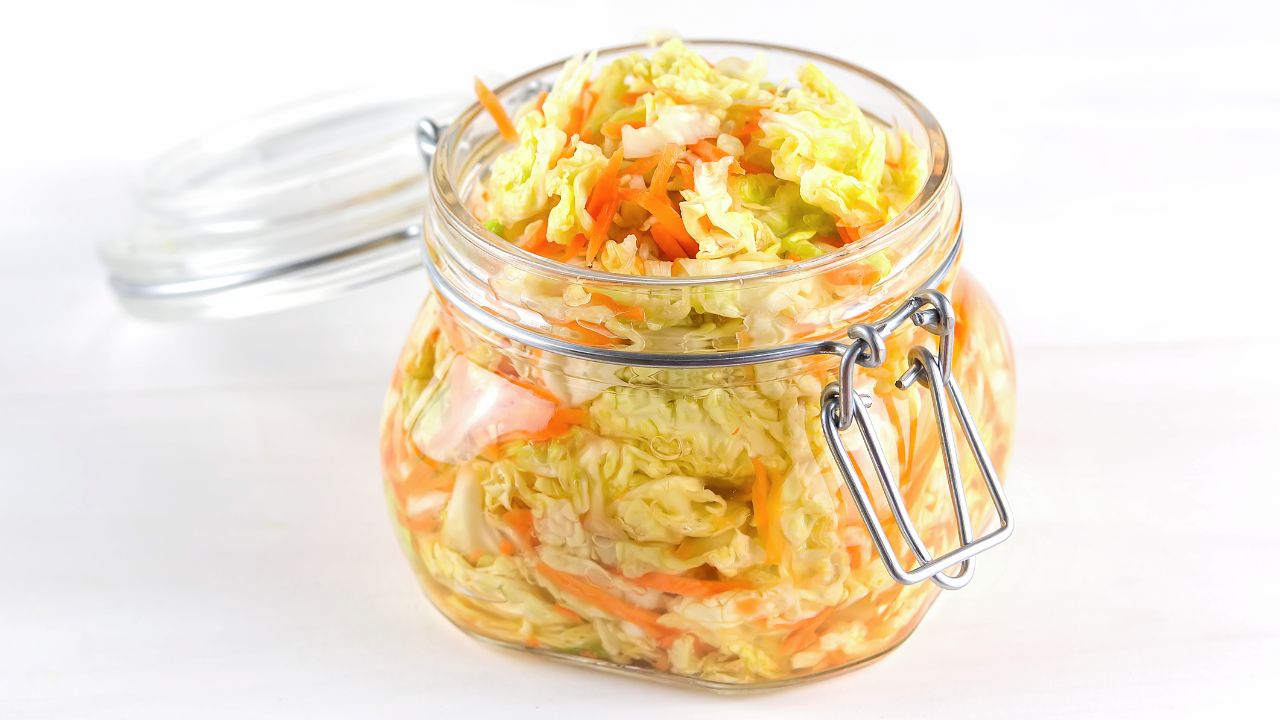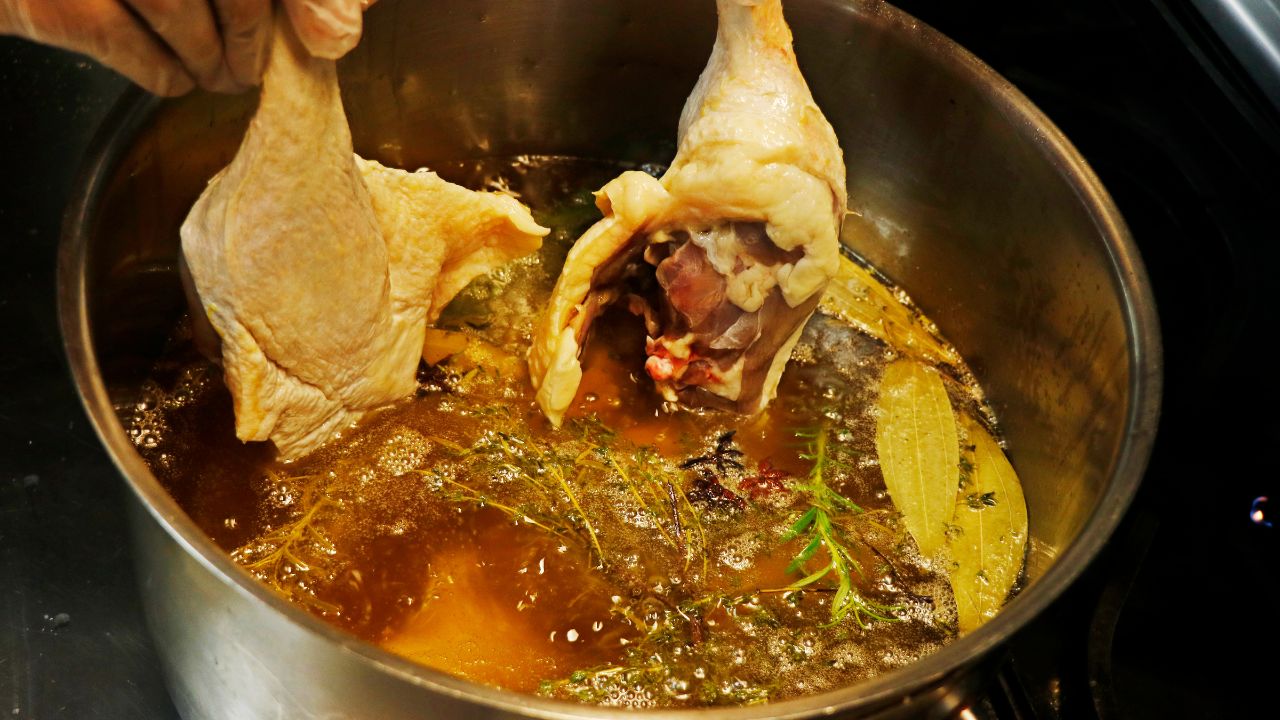Preserving food combines old techniques and new knowledge, helping us use our food wisely and save money. Whether you want to keep food from going bad, get ready for times when food might be scarce, or just have your favorite foods available all year, these 23 clever tips will show you how. I love to save food, especially when I find good deals, have a lot of veggies from my garden, or trade food with friends. This way, you can enjoy what you have without letting anything go to waste.
1. Freezing

Freezing is the go-to method for preserving a wide variety of foods. It’s simple: wash, dry, and store your food in airtight containers or freezer bags. Remember, the key to successful freezing is maintaining a consistent temperature and properly wrapping your foods to avoid freezer burn.
2. Canning

Canning can seem daunting, but it’s incredibly rewarding. You’ll need some basic equipment like jars, lids, and a canner. Start with high-acid foods like tomatoes or fruits, which can be processed in a water bath canner. The trick is in the seal – a properly sealed jar will keep your food safe and fresh for months, even years.
3. Drying

Drying, or dehydrating, is one of the oldest food preservation methods. Use a food dehydrator or a low oven to slowly remove moisture from fruits, vegetables, and meats. Dried foods are lightweight, space-efficient, and perfect for snacking or cooking.
4. Smoking

Smoking adds flavor while preserving meats and fish. You can use a traditional smoker or a makeshift setup. The key is to maintain a consistent low heat and use the right kind of wood for that perfect smoky taste.
5. Pickling

Pickling isn’t just for cucumbers! You can pickle a variety of vegetables using vinegar or a saltwater brine. Experiment with different spices and herbs to create unique flavors. Pickled foods have a long shelf life and a delightful tang.
6. Fermenting

Fermentation is magical. It not only preserves food but also enhances nutritional value. Try making sauerkraut, kimchi, or yogurt. The process involves natural bacteria, which makes foods more digestible and adds a unique flavor profile.
7. Salt Curing

Salt curing is great for meats. The salt draws out moisture and inhibits bacteria growth. You can dry cure with just salt or wet cure with a saltwater brine. Cured meats are delicious and have a long shelf life when stored properly.
8. Sugar Preserving

Preserving with sugar, like making jams and jellies, is a sweet way to keep fruits around longer. The high sugar concentration prevents microbial growth. Plus, who doesn’t love homemade jam on their toast?
9. Vacuum Sealing

Vacuum sealing extends the shelf life of food by removing air from the packaging. It’s perfect for freezing or pantry storage. This method works great for meats, vegetables, and even dry goods like cereals and nuts.
10. Cold Storage

Utilize your basement or root cellar for cold storage. Many vegetables like potatoes, carrots, and apples thrive in cool, dark, and humid conditions. It’s an energy-efficient method that relies on the right temperature and humidity.
11. Oil Preservation

Submerging food in oil cuts off oxygen and preserves it. This method works well for herbs and some cheeses. Store them in a cool, dark place, and enjoy the added flavor the oil imparts to the foods.
12. Alcohol Preservation

Alcohol is a potent preservative. Fruits preserved in alcohol maintain their texture and gain a rich flavor. Try brandy or rum for preserving small fruits or making fruit-infused liquors.
13. Lacto-Fermentation

Lacto-fermentation, a subset of fermentation, uses salt to encourage the growth of beneficial bacteria. It’s excellent for making pickles and fermented vegetables. The result? Crunchy, tangy, probiotic-rich foods.
14. Infusing

Infusing preserves while adding flavor. Steep herbs, spices, or fruits in oils or vinegars. You get preserved ingredients and create flavorful infusions for cooking.
15. Making Jerky

Making jerky is a tasty way to preserve meat. Thinly slice the meat, marinate it with your favorite spices, and dry it in a dehydrator or oven. Jerky is a protein-packed snack perfect for on-the-go.
16. Pressure Canning

Pressure canning is essential for preserving low-acid foods like vegetables, meats, and seafood. It involves processing food in a special pressure canner at a high temperature to kill potentially harmful bacteria. This method is great for making shelf-stable soups, stews, and vegetables.
17. Cellaring

Cellaring is a traditional method where certain types of produce are stored in a cool, dark, humid place, similar to a root cellar. It works well for root vegetables, winter squash, and some fruits like apples and pears.
18. Blanching and Freezing

Blanching vegetables before freezing can significantly improve their quality. Blanching involves briefly boiling vegetables and then plunging them into ice water to stop the cooking process. This method helps in preserving the color, texture, and nutritional value of the vegetables.
19. Pasteurization

Pasteurization involves heating liquids like milk, juice, cider, and honey to a specific temperature for a set period to destroy harmful microorganisms. This process extends the shelf life of these liquids while maintaining their nutritional quality.
20. Confit

Confit is a method traditionally used to preserve meats, particularly duck, where the meat is cooked slowly in its own fat and then stored, covered in the fat. This creates an anaerobic environment that helps preserve the meat.
21. Parching

Parching is an ancient method of preserving grains and legumes. It involves lightly toasting them until they are dry. This method not only preserves these foods but also imparts a nutty flavor.
22. Sulfuring

Sulfuring is used to preserve dried fruits. It involves exposing the fruits to sulfur fumes, which helps in retaining color and extending shelf life.
23. Quick Pickling

Quick pickling, unlike traditional pickling, is a fast process where vegetables are covered with vinegar, water, and salt solution. They can be consumed within a few days and stored in the refrigerator for a short period.
20 Crucial Supplies for Surviving a Societal Collapse

In the face of uncertainty, being well-prepared gives you at least some degree of control and security. The thought of a societal collapse, while extreme, prompts us to consider how we might endure without the conveniences of our current lifestyle. Here’s a list of 20 essential items that could prove indispensable in such a scenario. This guide isn’t about succumbing to fear but embracing preparedness and resilience.
14 Essential Canned Goods for Your Emergency Pantry

I firmly believe in keeping a well-stocked emergency pantry. While fresh food is ideal, in a survival situation, we may not be that lucky. So, for my family, even though we grow a lot of our own food, canned goods play a crucial role in emergency preparedness. They offer a reliable source of nutrition when access to fresh produce may be limited. The goods you stockpile should be affordable, easy to store, and full of nutrition.
Best Regions in the U.S. to Escape to When Society Collapses

Choosing a refuge in the event of societal collapse involves weighing the pros and cons of each location against your personal preparedness goals and abilities. Whether you’re drawn to the solitude of the desert or the protective heights of the mountains, the key is finding a place that offers safety and the opportunity for growth and renewal.
Katy Willis is a writer, lifelong homesteader, and master herbalist, master gardener, and canine nutritionist. Katy is a preparedness expert and modern homesteader practicing everyday preparedness, sustainability, and a holistic lifestyle.
She knows how important it is to be prepared for whatever life throws at you, because you just never know what's coming. And preparedness helps you give your family the best chance to thrive in any situation.
Katy is passionate about living naturally, growing food, keeping livestock, foraging, and making and using herbal remedies. Katy is an experienced herbalist and a member of the CMA (Complementary Medical Association).
Her preparedness skills go beyond just being "ready", she's ready to survive the initial disaster, and thrive afterward, too. She grows 100% organic food on roughly 15 acres and raises goats, chickens, and ducks. She also lovingly tends her orchard, where she grows many different fruit trees. And, because she likes to know exactly what she's feeding her family, she's a seasoned from-scratch cook and gluten-free baker.
Katy teaches foraging and environmental education classes, too, including self-sufficient living, modern homesteading, seed saving, and organic vegetable gardening.
Katy helps others learn forgotten skills, including basic survival skills and self-reliance.
She's been published on sites such as MSN, Angi, Home Advisor, Family Handyman, Wealth of Geeks, Readers Digest, and more.
